When to Plant Carrot Seedlings: A Complete Guide for Perfect Harvest Timing
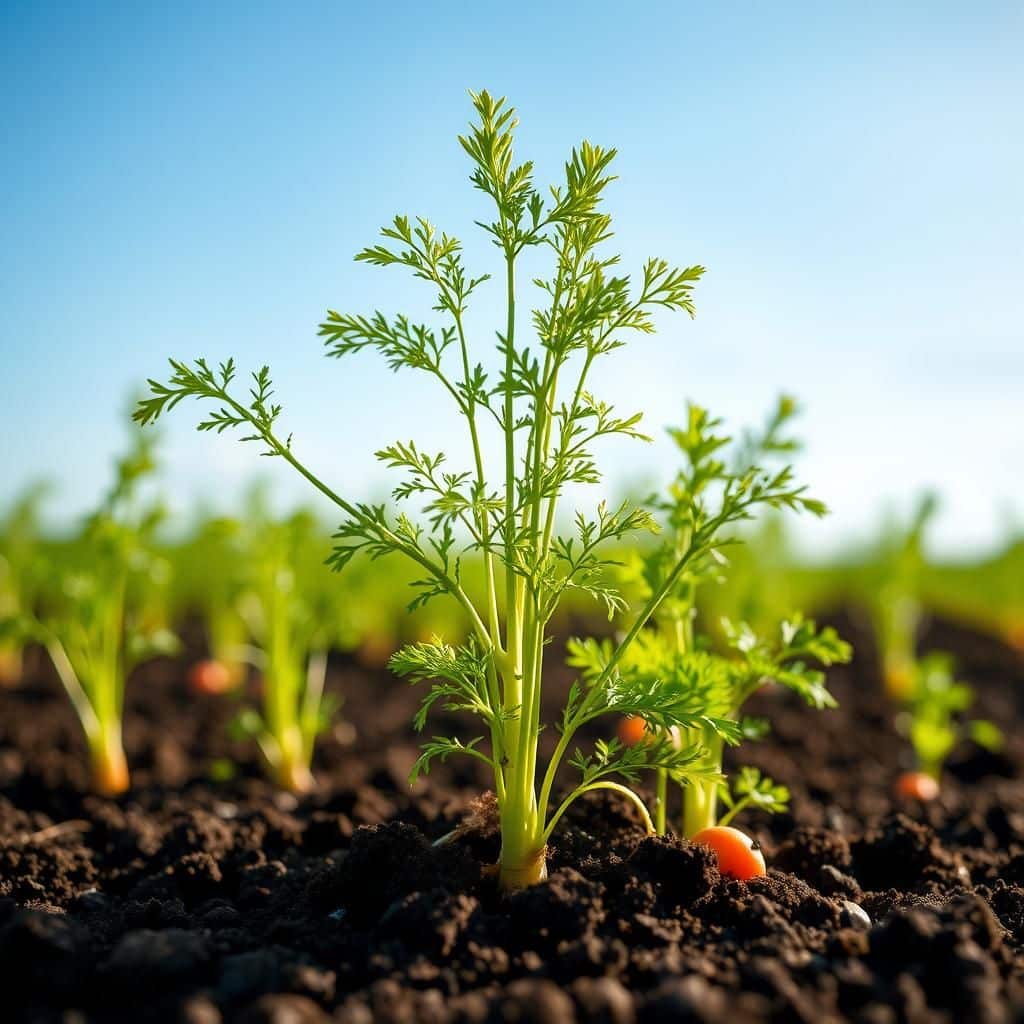
Timing is crucial when it comes to planting carrot seedlings for a successful harvest. Understanding the optimal planting times can significantly influence the quality and yield of your carrots. This complete guide will walk you through the best seasons and environmental conditions for sowing, ensuring that your carrots develop the right flavor and texture. Whether you’re a beginner or experienced gardener, knowing when to plant will help you avoid common pitfalls and achieve the perfect harvest. Dive into our comprehensive tips and tricks to align your planting schedule with the seasonal rhythms, and enjoy the satisfaction of growing delicious, home-grown carrots.
When to Plant Carrot Seedlings
Planting carrot seedlings requires careful consideration of the season and climate conditions in your area. Typically, carrots should be planted in the early spring when the soil temperature reaches at least 45°F (7°C), as they thrive in cooler temperatures. In regions with milder climates, it's also possible to plant in late summer for a fall harvest. Timing is crucial because carrots need a long growing season—usually between 70 to 80 days—so ensuring they are sown at the right time will help them mature properly, avoiding the risk of bolting in warmer weather.
Optimal Planting Time
The optimal time for planting carrot seedlings depends largely on your geographical location. In general, spring is ideal, with the best time being two to four weeks before the last expected frost date. For many regions, this falls between mid-March and mid-April. In areas with longer growing seasons, a second planting can be conducted in late summer, specifically around late July to early August, allowing carrots to mature in cooler temperatures during the fall.
Soil Temperature Requirements
Carrots prefer to be planted when the soil temperature is consistently around 45°F to 85°F (7°C to 29°C). At temperatures below 45°F, the carrot seeds may lead to poor germination, while soil temperatures above 85°F can encourage disease and result in a lack of proper growth. Therefore, monitoring the soil temperature is critical to ensure optimal conditions for germination and healthy growth.
Location and Sunlight
Selecting the right location plays a vital role in the successful growth of carrot seedlings. Carrots require full sun, meaning they need at least six hours of direct sunlight each day to thrive. Additionally, they should be planted in well-drained, loose soil to allow for proper root expansion. Areas that receive too much shade can stunt growth and lead to poorly formed roots or lower yields.
Watering Practices
Adequate watering is essential for the successful growth of carrot seedlings. After planting, the soil should be kept consistently moist, but not waterlogged, to promote proper germination. As seedlings begin to grow, it's important to provide one inch of water per week to ensure healthy development. Reducing watering frequency once the roots begin to mature can help prevent over-saturation, which may lead to root rot.
Pest and Disease Management
Finally, when planting carrot seedlings, it's important to be aware of potential pests and diseases that can affect your crop. Common pests include carrot flies and aphids, which can be deterred through the use of row covers or companion planting. Additionally, practicing crop rotation and keeping the planting area tidy can help prevent diseases such as downy mildew. Regular monitoring of the plants will allow for early intervention if any issues arise.
| Key Aspect | Details |
|---|---|
| Optimal Planting Time | 2-4 weeks before last frost in spring; late July to August for fall planting |
| Soil Temperature | 45°F to 85°F (7°C to 29°C) for best growth |
| Sunlight Requirement | At least 6 hours of direct sunlight daily |
| Watering | Keep soil consistently moist; 1 inch of water weekly |
| Pest Management | Use row covers; practice crop rotation for disease prevention |
When should I transplant my carrot seedlings?
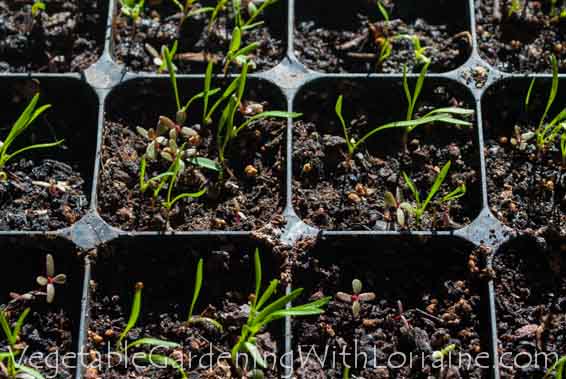
Transplanting carrot seedlings is a crucial step to ensure healthy growth and optimal yield. Generally, you should transplant your carrot seedlings when they are about 3-4 inches tall and have developed at least two true leaves. This usually occurs around 3-4 weeks after germination. It's important to consider the depth of your soil and the spacing of your seedlings to ensure they have enough room to grow.
Keep in mind that carrots are sensitive to disturbances in their root system, so it's advisable to transplant them with care to minimize shock.
Understanding Carrot Seedling Growth
Carrot seedlings typically emerge within 14-21 days after planting. They start as tiny sprouts, and their growth can be influenced by several factors. It's essential to monitor their development closely.
- Soil Quality: Well-draining soil with adequate nutrients promotes healthy growth.
- Lighting Conditions: Carrots need full sun for optimal development. Lack of light can delay growth.
- Watering: Consistent moisture is vital; however, overwatering can lead to root rot.
Optimal Transplanting Conditions
The best time to transplant carrot seedlings is typically when temperatures are between 60°F to 70°F (15°C to 21°C). Timing is essential since transplanted carrots can be stressed by extreme temperatures.
- Temperature: Warm soil promotes faster root establishment.
- Weather Conditions: Ideally, transplant on a cloudy day to minimize transplant shock.
- Soil Moisture: Ensure the soil is moist but not soggy before transplanting.
Transplanting Techniques
When transplanting carrot seedlings, it’s essential to take care of the root system. Disturbing the roots can lead to stunted growth or even failure to thrive.
- Handle with Care: Gently grasp the seedling by the leaves, not the stem, to prevent breakage.
- Digging Technique: Use a tool to dig around the seedling to capture as much of the root system as possible.
- Spacing: Space each seedling about 2-3 inches apart to allow for full growth.
Post-Transplant Care
After transplanting, monitor the seedlings closely to ensure they adjust well to their new environment.
See also: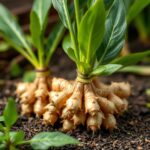
- Watering: Water the seedlings immediately after transplanting and maintain consistent moisture.
- Mulching: Apply mulch to retain soil moisture and suppress weeds.
- Fertilization: Give a light dose of fertilizer to promote recovery after transplanting.
Signs of Successful Transplantation
Identifying whether your carrot seedlings have successfully adapted to their new environment is crucial for ongoing care.
- New Growth: Look for signs of new leaves emerging within a week or two post-transplant.
- Healthy Color: Vibrant green leaves indicate that seedlings are thriving.
- Stability: Seedlings should remain upright and not wilt; any drooping may indicate stress.
Which month is best for planting carrots?
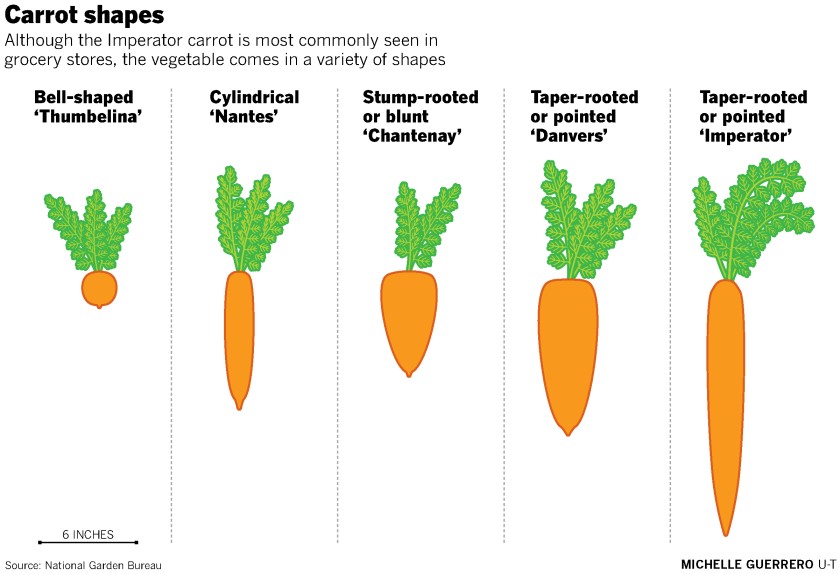
To determine the best month for planting carrots, it’s important to consider the climate and growing conditions in your specific region. Generally, carrots are cool-season crops that thrive in cooler temperatures. In many areas, the best months to plant carrots are March to May for a spring crop, while a late summer planting can be done from July to early August for a fall harvest.
This timing allows carrots to grow during periods when the soil temperature is conducive to germination and growth, typically between 50°F to 85°F (10°C to 29°C). Cooler weather helps develop sweeter, more flavorful carrots.
Understanding Carrot Growing Seasons
Carrots grow best during the cooler months of the year. The growing season varies by region, making understanding your local climate crucial. Here are some factors that influence when you should plant carrots:
- Frost Dates: Ensure that you plant carrots after the last frost date in spring and about 10 weeks before your first expected frost in fall.
- Soil Temperature: Carrots require a soil temperature of at least 45°F (7°C) for germination.
- Length of Growing Season: In areas with longer growing seasons, carrots can be planted in early spring and late summer.
Soil Preparation for Carrot Planting
Before planting carrots, it is essential to prepare the soil properly to ensure healthy growth. Carrots prefer loose, well-draining soil to develop straight roots. Here are steps to prepare the soil:
- Tilling: Loosen the soil to a depth of at least 12 inches, which allows unrestricted root growth.
- Soil Amendments: Incorporate organic materials such as compost to enhance soil structure and fertility.
- pH Check: Aim for a soil pH between 6.0 and 6.8 to provide optimal conditions for carrot growth.
Key Considerations for Timing
While March to May and July to August are typical months for carrot planting, local conditions significantly impact timing. Here are some considerations:
- Climate Zone: Identify your USDA Plant Hardiness Zone to tailor your planting schedule accurately.
- Local Weather Patterns: Watch for unseasonably warm or cold periods that could affect your planting schedule.
- Seed Variety: Different carrot varieties have varying days to maturity, influencing the best planting time.
Benefits of Succession Planting
Succession planting is the practice of planting carrots at intervals to ensure a continuous harvest. This method provides several benefits:
- Consistent Harvest: Planting every 2-3 weeks extends the harvest period and prevents a glut of carrots all at once.
- Optimal Size Control: Smaller carrots can be harvested earlier while allowing larger ones to mature further.
- Variety Testing: Experiment with different varieties by planting them at different times throughout the growing season.
Signs It's Time to Harvest Carrots
Knowing when to harvest is essential for enjoying carrots at their best. Here are signs that indicate your carrots are ready to be pulled:
- Visible Top: When the carrots shoulder (the part protruding above ground) is about 1 inch in diameter, it’s usually time to harvest.
- Color Change: A vibrant orange color is an indication of ripeness, although some varieties might be different shades.
- Time Since Planting: Depending on the variety, carrots typically take between 60 to 80 days to mature from planting.
When can I plant my carrot seedlings?
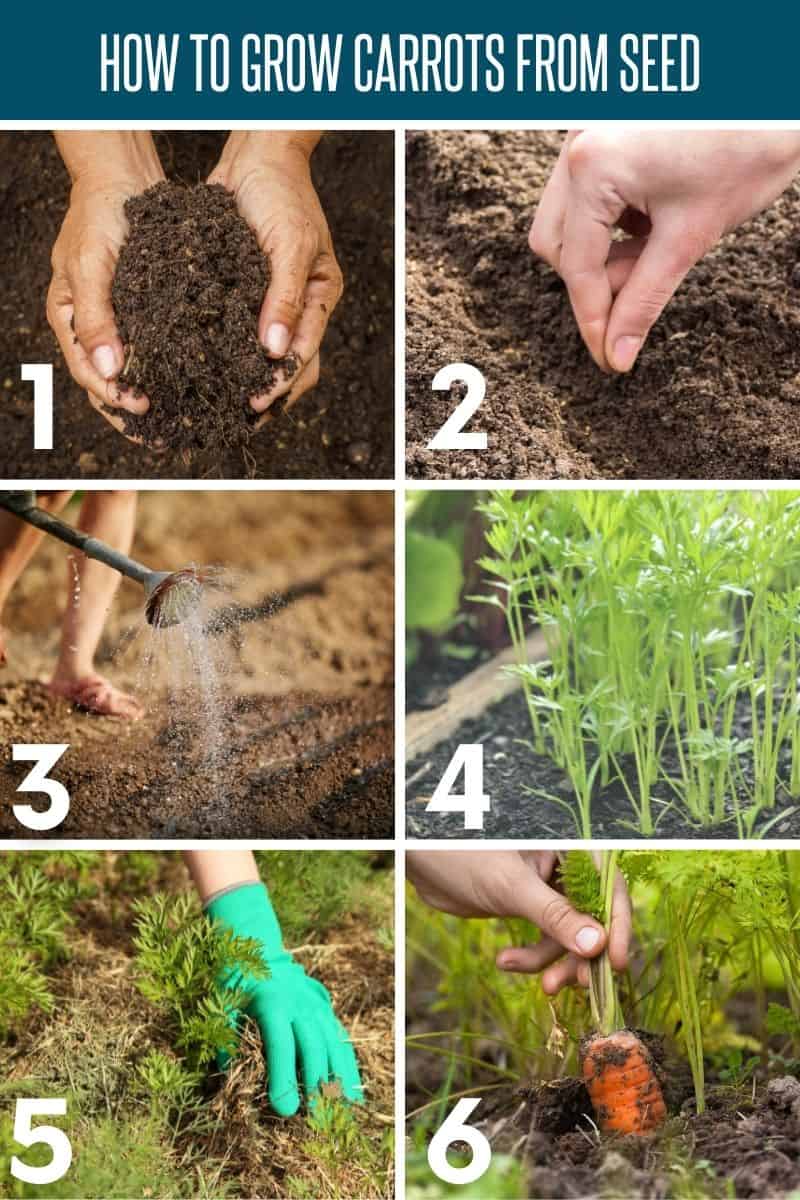
To determine when you can plant your carrot seedlings, it's essential to consider a few factors such as the climate in your area, the specific variety of carrots, and the overall growing conditions. Carrots prefer cooler temperatures, and the ideal time for planting will typically be in early spring or late summer, depending on your local climate.
In general, you can plant carrot seedlings when the soil temperature reaches at least 50°F (10°C). This is important because carrots need cooler soil to germinate effectively. Moreover, planting them at the right time helps to avoid pest problems and encourages a better yield.
Understanding Carrot Growing Seasons
The growing season for carrots varies depending on your location, but there are general timelines to follow:
- Spring Planting: Begin planting around 2-4 weeks before the last frost date.
- Fall Planting: For a late crop, sow seeds about 10-12 weeks before the first expected frost.
- Temperature Considerations: Aim for soil temperatures consistently above 50°F (10°C) for optimal germination.
Best Practices for Planting Carrot Seedlings
When planting carrot seedlings, it's important to adhere to several best practices that enhance growth:
See also:
- Soil Preparation: Ensure the soil is well-drained with a fine texture and rich in organic matter.
- Spacing: Plant seeds (or seedlings) about 2-4 inches apart to avoid overcrowding.
- Watering: Keep the soil moist but not soggy, especially during germination.
Choosing the Right Carrot Varieties
Different carrot varieties can have specific requirements that affect when and how you plant them:
- Short varieties: Earlier to mature, suitable for spring planting in cooler climates.
- Longer varieties: Typically planted later in the season, can handle cooler temperatures.
- Baby carrots: These can be harvested sooner, making them ideal for quick harvests.
Companion Planting with Carrots
Companion planting can boost the overall health of your carrot seedlings and improve yields:
- Onions: Help repel pests that commonly affect carrots.
- Leeks: These can also deter pests while enhancing flavor.
- Radishes: Can be planted alongside to break up soil and prevent weeds.
Common Pests and Problems for Carrots
Being aware of common issues can help ensure your carrot seedlings thrive:
- Carrot Flies: These pests burrow in the roots; consider using row covers to prevent them.
- Weeds: Compete for nutrients; regular thinning and mulching can help control them.
- Disease: Fungal issues can arise from overly wet conditions; ensure proper irrigation.
What is the trick to planting carrots?

To successfully plant carrots, there are several key techniques that can enhance your results. Here are the essential steps and tips for planting carrots effectively.
Soil Preparation
Preparing the soil is critical for successful carrot growth. Carrots thrive in loose, well-draining soil that allows for proper root development.
- Loosen the soil: Use a spade or fork to break up compacted soil at least 12 inches deep.
- Remove debris: Clear stones, clumps, and old plant matter to prevent obstruction of the carrot roots.
- Add organic matter: Incorporate compost or well-rotted manure to improve soil fertility and drainage.
Choosing the Right Variety
Selecting the appropriate carrot variety is crucial, as some are better suited for specific soil types and growing conditions.
- Short varieties: For shallow or rocky soils, consider planting shorter varieties like ‘Napoli’ or ‘Little Finger’.
- Long varieties: In deeper, loose soils, longer types such as ‘Danvers’ or ‘Imperator’ can be ideal.
- Color options: Explore different colors like purple, yellow, or white carrots for a unique twist on your garden.
Correct Sowing Technique
Sowing carrots properly can impact their growth and yield. The technique involves precise spacing and depth.
- Seed depth: Sow seeds about ¼ inch deep to ensure optimal germination.
- Spacing: Plant seeds 2-4 inches apart in rows that are 12-18 inches apart to allow space for growth.
- Thin seedlings: Once seedlings emerge, thin them to avoid overcrowding, allowing 2-4 inches between plants.
Watering Practices
Proper watering is vital for carrot health. Inadequate moisture can lead to poor root development.
- Consistent moisture: Water regularly, keeping the soil moderately moist but not soggy to encourage even germination.
- Gentle method: Use a fine spray or drip irrigation to avoid displacing seeds or young plants.
- Mulch: Consider applying a layer of mulch to retain soil moisture and suppress weeds.
Pest and Weed Management
Controlling weeds and pests is essential for the healthy growth of carrots, preventing competition and damage.
- Weeds removal: Regularly remove weeds by hand or with a hoe, as they compete for nutrients and water.
- Natural deterrents: Use companion planting strategies, like planting onions or garlic nearby to repel carrot flies.
- Regular monitoring: Keep an eye on your garden and address pest issues promptly to minimize damage.
Questions from Our Readers
When is the best time to plant carrot seedlings?
The best time to plant carrot seedlings is in early spring or late summer. Carrots thrive in cooler temperatures, ideally between 60°F and 70°F. Planting in these seasons allows the seeds to germinate effectively and develop robust roots.
What conditions are ideal for carrot seedling growth?
Carrot seedlings require loose, well-drained soil rich in organic matter and full sun exposure. Maintaining adequate moisture is also important; however, avoid waterlogging, as it can harm the delicate roots. Ensuring these conditions will promote healthy growth.
How deep should I plant carrot seedlings?
Carrot seedlings should be planted at a depth of about ¼ to ½ inch. This allows the seeds to be adequately covered while ensuring they receive the necessary light for germination. Proper depth is crucial for successful seed establishment.
Should I thin my carrot seedlings after planting?
Yes, it is recommended to thin carrot seedlings once they have established themselves. Thinning ensures that the seedlings have enough space to grow without competing for resources. Aim to keep the strongest seedlings about 2 to 4 inches apart for optimal development.
See also:

If you want to read more articles like When to Plant Carrot Seedlings: A Complete Guide for Perfect Harvest Timing, we recommend you check out our Seeds category.
Leave a Reply
Related Articles